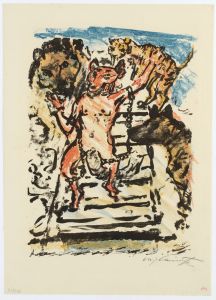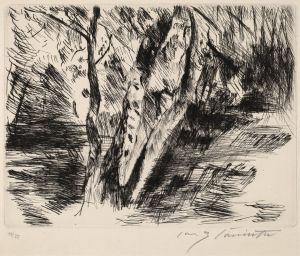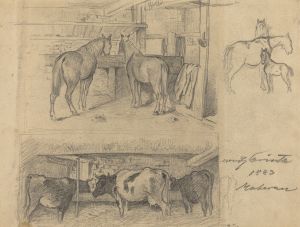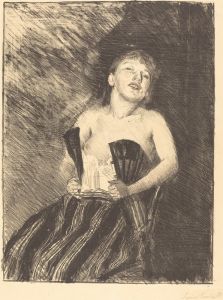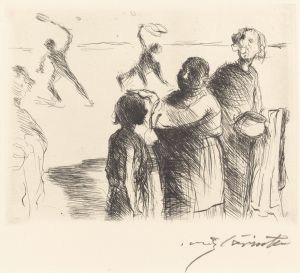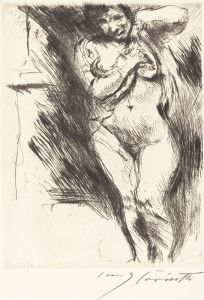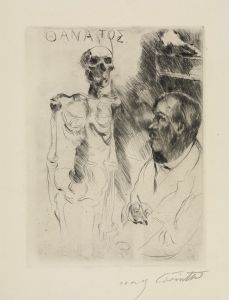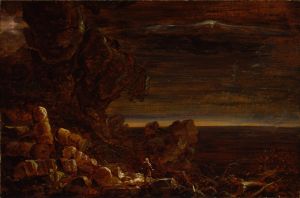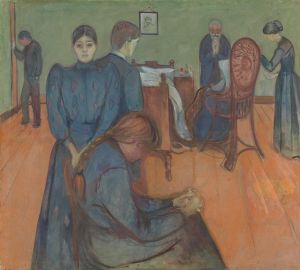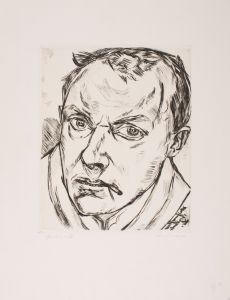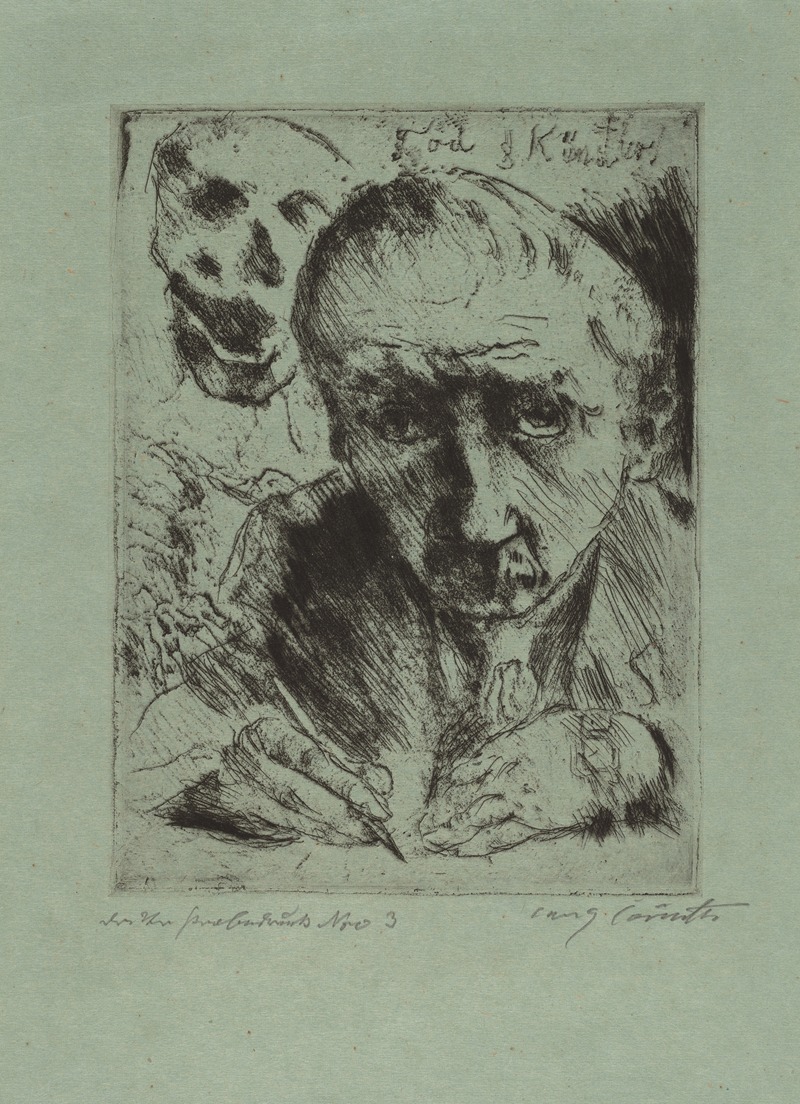
Tod und Künstler
A hand-painted replica of Lovis Corinth’s masterpiece Tod und Künstler, meticulously crafted by professional artists to capture the true essence of the original. Each piece is created with museum-quality canvas and rare mineral pigments, carefully painted by experienced artists with delicate brushstrokes and rich, layered colors to perfectly recreate the texture of the original artwork. Unlike machine-printed reproductions, this hand-painted version brings the painting to life, infused with the artist’s emotions and skill in every stroke. Whether for personal collection or home decoration, it instantly elevates the artistic atmosphere of any space.
Lovis Corinth's painting Tod und Künstler (translated as Death and the Artist) is a significant work by the German painter, created in 1918. Corinth, a leading figure of the German Impressionist and Expressionist movements, often explored themes of mortality, existential struggle, and the human condition in his art. This painting is a poignant example of his engagement with such themes, reflecting his personal experiences and the broader cultural context of the time.
The painting depicts a dramatic and symbolic confrontation between an artist and the personification of death. Corinth portrays death as a skeletal figure, a common motif in Western art, particularly in the tradition of the Danse Macabre and memento mori. The artist, likely a representation of Corinth himself, is shown in a moment of vulnerability, facing the inevitability of mortality. The composition is emotionally charged, with dynamic brushstrokes and a vivid color palette that heighten the tension between the two figures.
Tod und Künstler was created during a period of profound personal and societal upheaval. In 1911, Corinth suffered a stroke that left him partially paralyzed on his left side. Despite this physical setback, he continued to paint, adapting his technique and producing some of his most introspective and expressive works in the years that followed. The painting also reflects the broader context of World War I and its aftermath, a time when themes of death and existential uncertainty were pervasive in European art and culture.
Stylistically, the painting demonstrates Corinth's mature approach, blending elements of Impressionism with the emotional intensity of Expressionism. His loose, vigorous brushwork and dramatic use of light and shadow convey a sense of immediacy and psychological depth. The work is often interpreted as a meditation on the artist's own mortality and the role of art in confronting the transient nature of life.
Today, Tod und Künstler is regarded as one of Corinth's most compelling works, exemplifying his ability to merge personal experience with universal themes. It is housed in the collection of the Kunsthalle Bremen in Germany, where it continues to be studied and appreciated for its artistic and historical significance.






